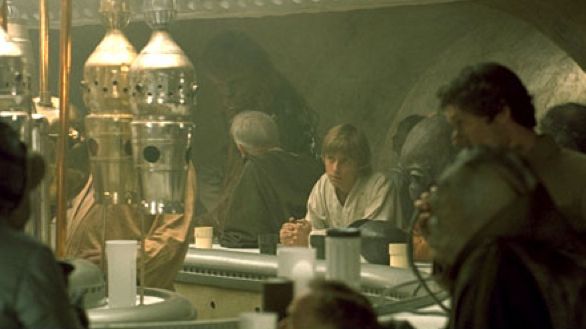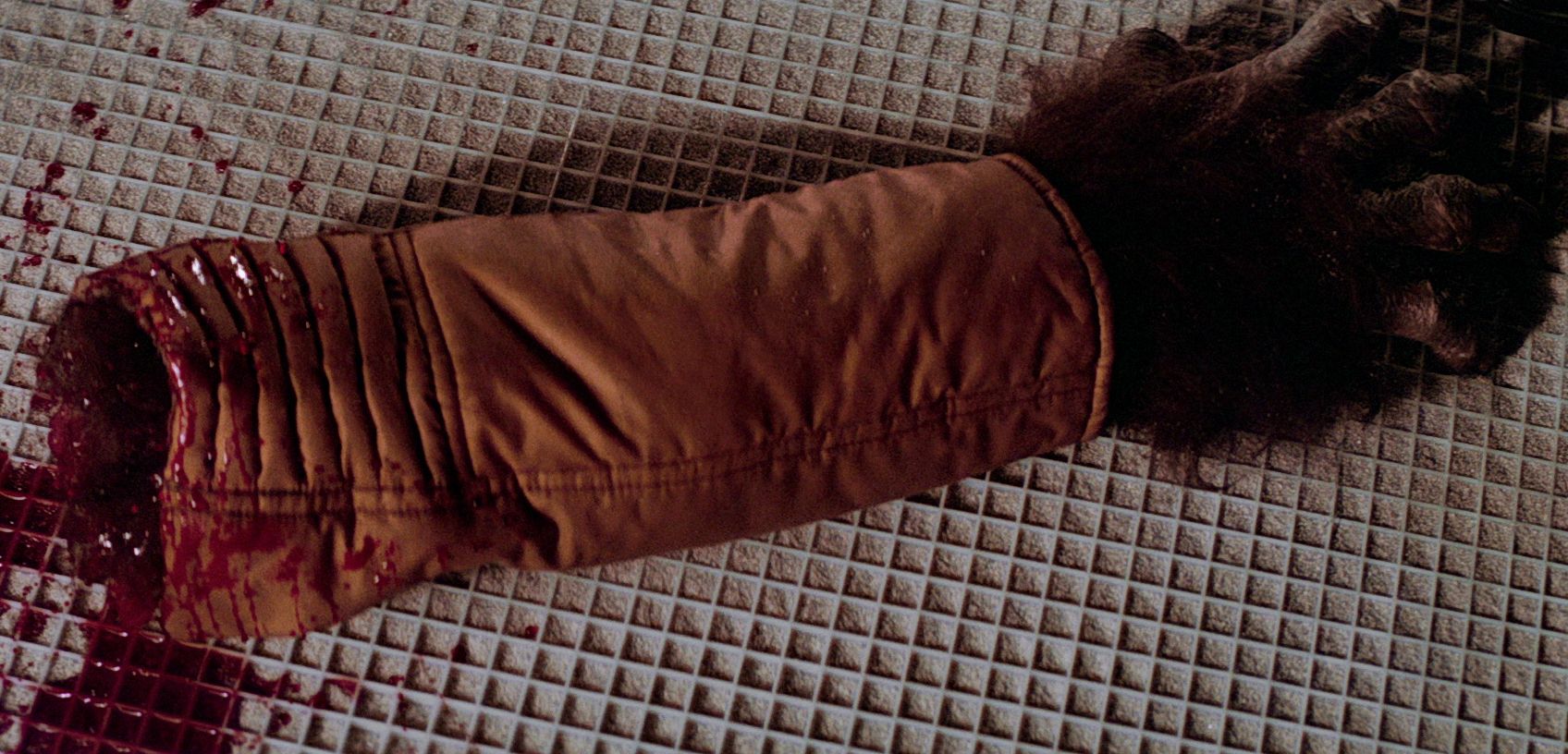MOVIE URBAN LEGEND: George Lucas added a scene involving a severed arm to Star Wars to ensure the film would be rated PG instead of G.
When the Motion Picture Association of America (MPAA) instituted the film rating system in 1968, the approach was a good deal different than it is now. There were four ratings: G (for general audiences), M (for mature audiences, which became PG in 1972), R (restricted) and X (adults only, which became NC-17 in 1990). The only ratings that required age restrictions were R (no one admitted under 16 without a guardian, later changed to no one under 17) and X (no one admitted under 18, period, later changed to no one under 17). The G rating wasn’t intended to mean fare for children; it simply meant the film was suitable for a "general audience." As a result, a number of films in the late 1960s and early 1970s were released with G ratings that would seem surprising today -- among them, True Grit, Planet of the Apes, The Odd Couple and Airport.
More than one-third of the films released in 1968 were rated G, many because of confusion about the M rating, the middle ground between "open to general audiences" and "restricted." "Mature" gave off the wrong connotation, as M-rated films held no age restrictions. However, it seemed as if "mature" suggested more adult fare when it actually was intended to let parents know the film might be unsuitable for small children. The PG rating was introduced in 1972 and soon became the most popular rating for non-R films (as you might imagine, because PG was for all films that didn't meet the standard for an R, the content in PG films varied dramatically, ultimately leading to the introduction of PG-13, which also carried no age restriction, but at least gave parents the warning that kids under the age of 13 likely shouldn't watch the film).
Of the six Star Wars films by George Lucas, all but one of them were rated PG (just the final prequel, Star Wars: Episode III -- Revenge of the Sith, received a PG-13). The first three films predated the PG-13 rating, but when they were re-released in the 1990s, they maintained their original ratings. However, legend has it (suggested to me by reader Mike J.) that Star Wars nearly received a G rating but actually added a scene to ensure a PG rating. A 1980 article about the shrinking amount of G-rated fare in 1980 stated:
Even Star Wars didn't risk the jinx of the G...the preliminary version initially earned a G rating from the MPAA. To get the desired PG, however, a scene depicting a dismembered arm was added to the cantina sequence.
Is that true?
Before I go any further, let me note that, over the years, I’ve heard the basic story Mike J. sent in, only in that case, the supposed added scene was the sequence where we see Uncle Owen and Aunt Beru's charred corpses.
However, neither story is true.
I think perhaps some of the confusion comes from discussions during the production of the film, when the special-effects crew would check with Lucas (who would, in turn, check with producer Gary Kurtz) about what rating they were shooting for, so they would make the effects (particularly the cantina sequence) fit that rating, toning it down if they were looking for a G -- or, well, not toning it down if they were looking for a PG. At the time, they were, indeed, aiming for PG, so it was likely with that in mind that we had the sequence where Obi-Wan Kenobi slices off Ponda Baba's arm, and we get a nice close-up shot of the aftermath. Some cantina creatures were deemed TOO gross (including one pus-filled creature).
However, all of those scenes (including the Owen and Beru shots) were included when the film was submitted for rating, and Star wars still received a G initially! There was a split among the ratings board, but eventually it settled upon G. Fox decided on an unusual gambit: The studio resubmitted the film and requested that it receive the stricter rating. Executives wanted a PG rating, partly because they felt some of the scenes DID seem too graphic for very young viewers and didn't wish to hear parents later complain, but primarily because they felt that the G rating by this time was seen as "uncool" and a sort of box-office poison for a non-animated film.
Charles Lippincott, the advertising publicity manager for Star Wars, related the fascinating story of the films PG rating to J. W. Rinzler's book, The Making of Star Wars:
I had a kid about five years old sitting in front of me. And when Darth Vader appears on the bridge of the Princess' ship at the beginning and grabs the guy and chokes him, the kid began crying, and just really broke down. So I said to George, 'This film is a PG.' Well, a friend of mine was on the ratings board, and she was one of I think two females on the board, and she was one of the few who actually knew the film. She said the men were absolutely bored by it, a couple of them fell asleep, and they all voted it as a G movie. The only one who was concerned about it was a mother, the only other woman there, who felt it was a little too intense for kids. But all the guys dismissed her, so it came out with a G rating - you know, the worst thing we could possibly get. I said, 'This is not a G-Rating film.' So we went back to them for a PG. They had never had this done to them before by anybody, and they couldn't believe it. So the board reneged and gave it a PG because we wanted that.
The MPAA ratings board is a bit of an odd sort. A while back, I did a Movie Legends Revealed on Brian De Palma essentially pretending to make edits to Scarface to receive an R rating instead of X.
Anyway, as to this legend, it is ...
STATUS: False
Thanks to J. W. Rinzler and Charles Lippincott for the information and thanks to Mike J. for the suggestion!
Feel free (heck, I implore you!) to write in with your suggestions for future installments! My e-mail address is bcronin@legendsrevealed.com.
Be sure to check out my Entertainment Urban Legends Revealed for more urban legends about the worlds of TV, Movies and Music!




